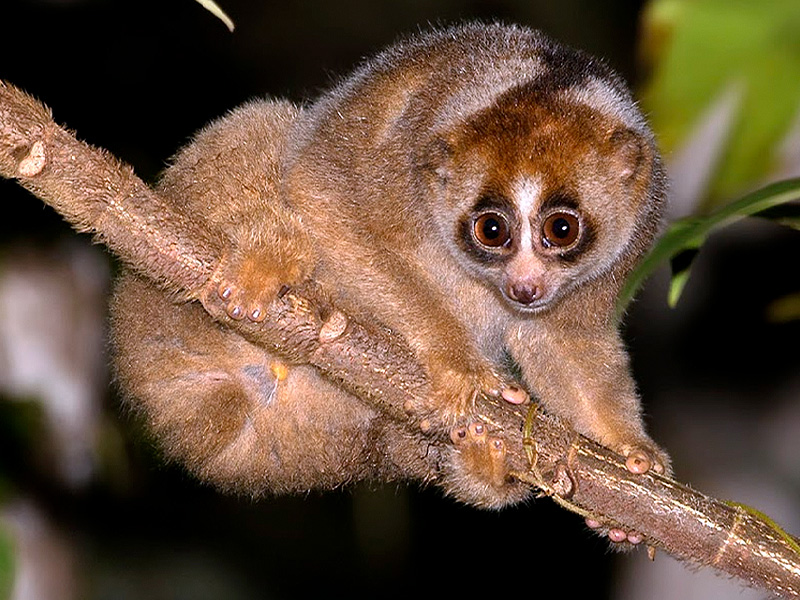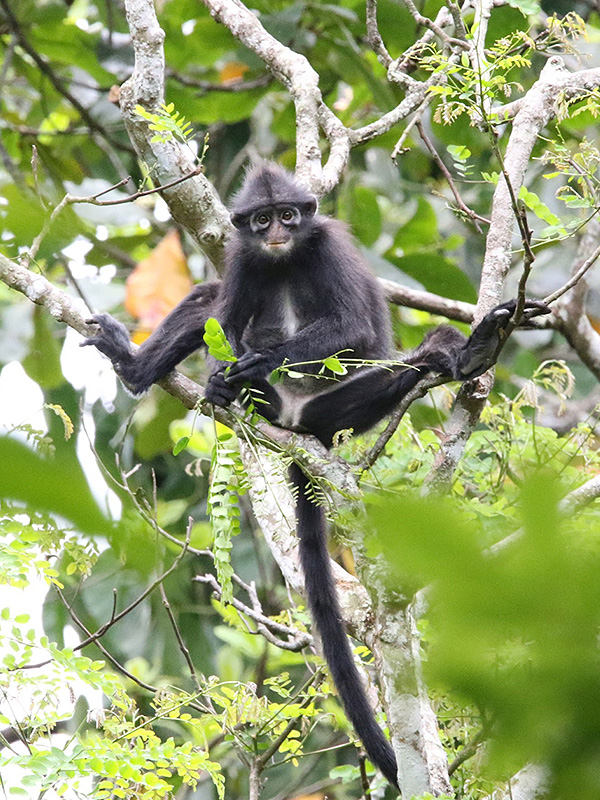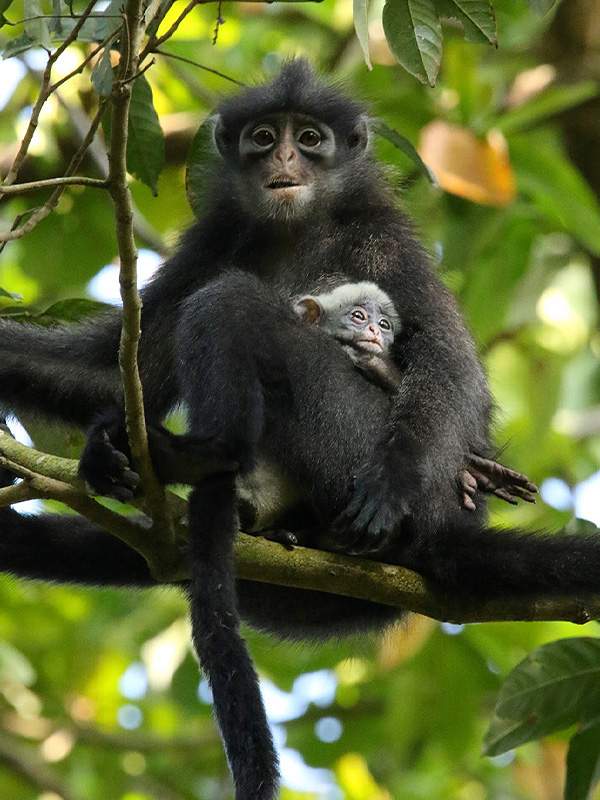Resting. Photo credit: Sabrina Jabbar

Primates of Singapore
Raffles’ Banded Langur
These are the largest of Singapore’s non-human primates. Including their tail, they can be up to 140 centimetres long and weigh over 6 kilograms. While their distinctive black and white markings certainly help them stand out against the green foliage, the langurs are shy, elusive and rarely descend from the trees, making them extremely difficult to find.
The Raffles’ banded langur is listed as critically endangered in Singapore because of a small population size (ca. 66 individuals) and a restricted distribution (only within the Central Catchment Nature Reserve in Singapore). In order to take effective action for conservation, information on population size and distribution needs to be collected and updated through field surveys.
Long-tailed Macaque
Long-tailed macaques are probably the most familiar non-human primates you see in Singapore. With human development encroaching further and further into their habitat, we have become close neighbours. Sadly, a lack of education on appropriate human behaviours around wildlife has led to a rise in human-macaque interaction and conflict. The easiest example of this is food – the more people feed the macaques, the more they unintentionally change the macaques’ feeding behaviour. Macaques have come to learn that humans provide easy access to food and continue to rely on them.
If your residential area is facing issues with monkeys, kindly contact NParks at 1800-476-1600.

Photo credit: Sabrina Jabbar

Photo credit: Nick Baker
Sunda Slow Loris
Famous for their enormous eyes and small stature, slow lorises are one of the few mammals and the only primate with a venomous bite. Despite this natural defence, their attractive appearance has made them a prime target in illegal pet trade.
Much like the Raffles’ Banded Langur, the slow loris is incredibly shy and elusive. They are also primarily nocturnal, which makes them the least studied primate in Singapore. While we know their numbers are in decline due to the illegal pet trade, we unfortunately don’t know how many are left in the wild, making efforts to support their protection all the more urgent.
It is the mission of JGIS to actively work to support the conservation of all primates in Singapore but, for now, our limited contact with the slow loris may actually be its best defence. In the past few decades, there have been confiscations of slow lorises in Singapore, clearly suggesting that it is involved in their illegal trade. If you spot any slow lorises being kept in people’s homes or being sold, please notify NParks at 1800-476 1600.



